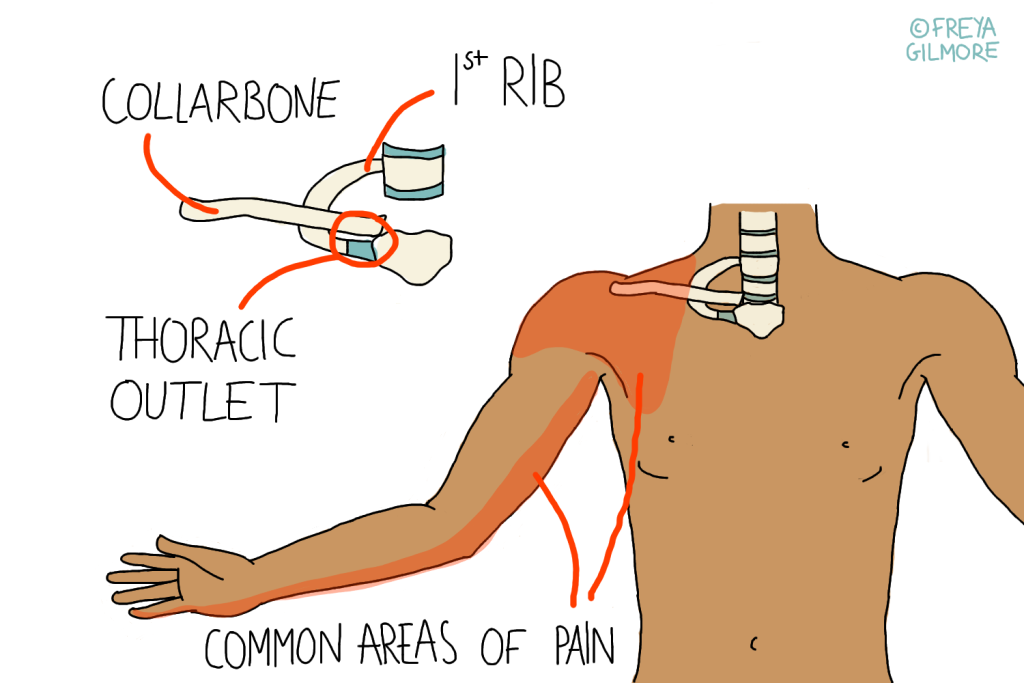The thoracic outlet is a space where blood vessels and nerves leave the torso on their way to the arm. It is formed by the first rib and the collar bone. The outlet is tightly packed, and there are a number of things that can cause compression to those blood vessels, or nerves, or both. This is Thoracic Outlet Syndrome.
Nerves are much more commonly affected than blood vessels, so the symptoms are generally quite uniform. Typically one sided pins and needles or numbness would be the main complaint. Most commonly this would be felt down the inside of the arm or into the hand or shoulder.
Potential Causes of TOS
Often the cause is muscular. Rounded shoulders are associated with tight chest muscles- some of which can directly compress the nerves in question. In this case, we would consider why the shoulders are rounded in the first place. This might lead to an ergonomic assessment at work as a preventative measure. Treatment would then involve direct work to the tight muscles and exercise to improve posture. Sleeping with one arm overhead is a similar postural risk factor.
Exercise can also lead to Thoracic Outlet Syndrome; especially repetitive overhead movements such as throwing or swimming. Essentially this is still a muscular picture, with overdeveloped muscles around the small thoracic outlet impinging on the nerves or blood vessels running through.
Trauma to the neck or shoulder can be another trigger for the development of TOS. For example, a collar bone fracture may heal with a callus over the fracture site. Depending on location, this protrusion could take up space in the thoracic outlet.
Diagnosing Thoracic Outlet Syndrome
Thoracic Outlet Syndrome is somewhat controversial, because accurate diagnosis is difficult. Similar symptoms can come from the neck, for example, and clinical tests are not 100% accurate at telling them apart. However, your osteopath can use a range of different tests, along with your account of your symptoms, to work out what is most likely the cause of your pain.
It is important that we work out whether your symptoms are neurogenic or vascular. If blood vessels have been compromised, the case is more severe and may require surgery. If your symptoms occur with a change of colour or coldness to the arm, speak to a doctor before visiting your osteopath. Not all cases of Vascular TOS induce these symptoms, but they are unlikely in purely neurological cases.
Managing TOS
Once we are satisfied with your diagnosis, we can devise a treatment plan. As mentioned above, cases associated with postural factors will involve some management of muscle imbalances. A hunched desk posture can lead to tight chest muscles and weak upper back muscles. Treatment and exercises to target these factors will aim to loosen the tight muscles and strengthen the weak ones. We like to work on both areas simultaneously so the body doesn’t have to fight against itself. We can also give advice for a better desk positioning- general ergonomics will only get you so far.
Click here to make an appointment in Buckinghamshire or Bedfordshire for your TOS

